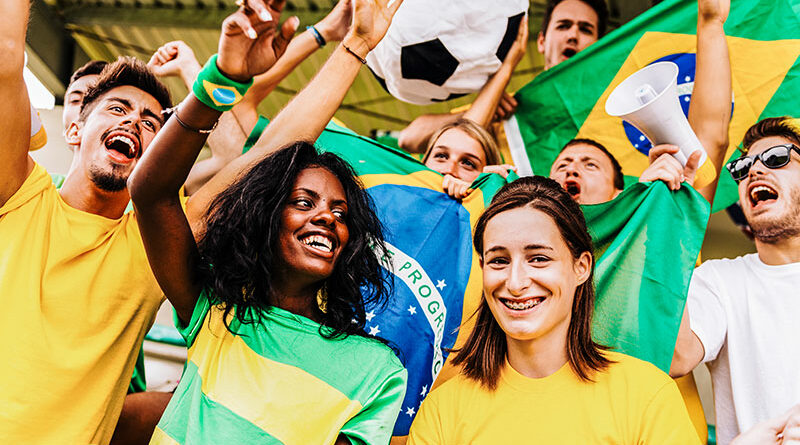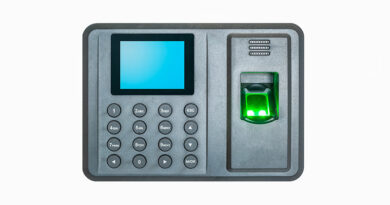Brazil Using Facial Recognition Biometrics at 2014 World Cup
The following post was written by Tanvir Ahmed, SEO Executive with M2SYS Technology
The whole world is watching as the FIFA 2014 World Cup is being held in Brazil at eighteen locations throughout the country. FIFA 2014 offers much more for Brazil than simply athletic entertainment because of their rich and varied sporting history in the game.
The Brazilian government started preparations for this much awaited and world renowned event years ago and it is the second time the country is host country (last time it was held in 1950). Thirty two countries will be competing in the event, the first time the tournament will be held in South America since 1978.
Security issues in Brazil
Following the announcement that the country would be hosting the tournament, Brazilian sports minister Aldo Rebelo admitted the 2014 World Cup might face some serious security issues as more than 3.7 million (600,000 international fans and three million Brazilians) people are expected to travel throughout Brazil in the 2014 World Cup season.
Riots rocked Rio de Janeiro’s famous Copacabana Beach district last month and fears about safety for thousands of football fans visiting Brazil were heightened by the fatal shooting of a man during a clash with police close to the England team hotel in São Paulo.
In fact, robberies that lead to homicide have hit a nine-year high in São Paulo.
Planned security measures include facial recognition biometrics
The Brazilian government has invested over $900 million to take adequate security measures so the tournament can be one of the most protected sports events in history. FIFA Secretary General Jérôme Valcke promised “the highest level of security you can imagine” will be put in place during the competition.
Investment in security technology include facial recognition systems and unmanned robots which have already been deployed in all world cup stadiums to support an integrated security plan developed to gain information from several sources about a documented watch list of troublemakers, hooligans, and potential terrorists.
Facial recognition
Facial recognition technology has already proven to help improve security and protect fans at events as large as those attending the World Cup. The Brazilian government has already purchased facial recognition cameras capable of capturing 400 facial images per second to store them in a central database of up to 13 million faces.
They have also deployed video security systems at stadiums in preparation for the FIFA world cup. The set up includes over 250 IP security cameras, operated through a video management system with integration to the building management system, as well as ticketing access control.
Whenever a fan enters the arena, their ticket is indexed with a picture taken by the surveillance system, to enable facial recognition identification if it’s needed. Recognition is facilitated through a powerful back end facial recognition identification algorithm.
Unmanned robots
The Brazilian government also purchased 30 security robots previously used by the United States armed forces and some other large military forces in the world to improve public safety during the tournament. It costs nearly $3.5 million each for those small unmanned ground vehicles equipped with ‘Robocop-style’ glasses with face recognition cameras which are capable of providing surveillance, bomb removal, and other law-enforcement missions.
These multi-rolled bots have already proven useful for a variety of law enforcement applications in many countries, such as the inspection of potentially dangerous areas and objects, the removal of suspicious devices, and the detection of chemical and explosive agents.
The Aftermath
Face recognition technology might reduce the security threat in World Cup since a face is undeniably connected to its owner except in the case of identical twins. Faces are nontransferable and the system can then compare scans to records stored in a central or local database or even on cloud based database.
Law enforcement agencies in many countries have already started using facial recognition technology to identify criminals. Because it is widely using as a crime fighting tool, businesses are trying to expand the use this technology also for more practical applications which include employee and customer identification. But the question is, is facial recognition ready for the masses?
Conclusion
The Brazilian military will also operate Hermes 450 drones (unmanned surveillance aircraft) which will be on the lookout for any suspicious activity during the tournament. As the world watches Brazil augment its security efforts with the use of facial recognition biometrics, it’s just matter of time to see whether this new technology will prove to be effective in the effort to increase security and protect fans.











Pingback: Facial Recognition - goodbye to privacy? - Hide My Ass! Blog